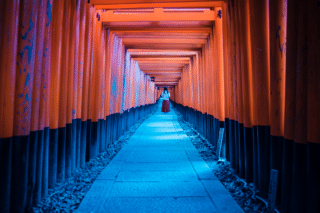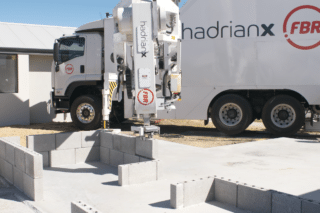Swiss company Ecocell AG won the Construction & Living category of the GreenTec Awards at IFAT for its sustainable Betonwabe material. Fredy Iseli, company founder, talked to DirectIndustry e-magazine about their “concrete honeycomb”.
DirectIndustry e-magazine: What is Ecocell’s Betonwabe concrete honeycomb made from?
Fredy Iseli: Ecocell’s scope of business is the production, construction and planning of residential properties (ECO-Solar modular homes), implementing self-engineered Ecocell building elements, including Betonwabe honeycomb panels. The panels are used in a cost-saving, environmentally sustainable new construction system and are made of 100% renewable resources: wood, fibers, raw paper recovered from recycled paper and cardboard packaging. The raw, corrugated cardboard panels, which are fabricated exclusively for Ecocell, have a hollow cell structure and are then mineral-coated in cement. During this process, the complete surface is evenly coated: The honeycomb panels thus retain their hollow cell structure.
DirectIndustry e-magazine: What was the inspiration behind Betonwabe?
Fredy Iseli: Nature. It has perfected lightweight construction—its honeycomb and curved structures provided the inspiration. Maximal compression strength, lightweight construction, low cost, minimal material usage and the protection of the environment have been key throughout the long-term development process. The houses erected by Ecocell all follow a pioneering philosophy: As well as using sustainable building materials, the energetically optimized houses produce their electricity themselves. Photovoltaics on the roof and on the facade and the latest storage systems for electrical energy are applied in the innovative ECO-Solar module houses.
DirectIndustry e-magazine: How does this system work?
Fredy Iseli: The components allow the creation of individual properties in dry construction.
The system is modular and the panels are industrially manufactured with high accuracy. This reduces construction costs and construction time. After mineral coating, the dried elements are planked with wood panels. The sandwich composites are then fabricated into modular building elements, which can be fitted together with ease via tongue and groove joints. Ecocell modular building systems include wall and ceiling elements, as well as a wide and diverse range of connecting and special components.
DirectIndustry e-magazine: What are Betonwabe’s special properties and advantages in construction?
Fredy Iseli: High compressive strength—and the concrete honeycomb is also the world’s first heat insulation featuring superior static compression. The densely packed and closed air cells also provide an exceptionally high amount of thermal insulation. They also offer high fire protection: This is due to the cement-coated cell structure and the closed coverage provided by the multilayered wall construction. Finally, Betonwabe is lightweight—even large-scale wall and ceiling components can be erected manually or with light lifting tools on the construction site.











